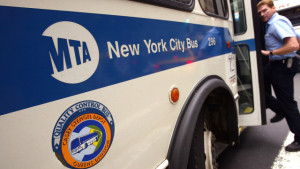On December 18, 2009, then 12 year old Angel Ramos was struck by a city bus as he was attempting to cross Westchester Avenue between 163rd Street and Rogers Place in the Bronx.
Angel had attended his usual after-school math tutoring class at Sylvan Learning Center and intended to meet up with his aunt and cousins for a church youth program. He never got there.
Angel had just exited a different bus, walked behind it and was about to cross the street to board another bus when the incident took place. The bus driver claimed that Angel was crossing mid-block, failed to use a nearby crosswalk and had walked into the side of his bus causing his tire to run over Angel’s foot.
In the ensuing lawsuit, however, after 17 days of trial over a one month period, a Bronx jury determined on May 27, 2014 that the bus driver was fully at fault for the incident and they awarded plaintiff pain and suffering damages in the sum of $4,907,000 ($1,000,000 past – four and a half years, $3,907,000 future – 57 years).
In Ramos v. New York City Transit Authority (1st Dept. 2016), both the liability and damages verdicts have been affirmed.
As set forth in the court’s decision, Angel sustained a traumatic brain injury (TBI) and left foot fractures and degloving. Here are the injury details:
- Brain – subdural hematoma, intracranial hemorrhage and lesion on left side (a) causing neurocognitive disorders impairing executive functioning, attention deficits, significantly diminished ability to process information, memory loss and daily headaches and (b) leaving plaintiff unable to finish regular high school and unable to work unless the tasks are menial and repetitive.
- Left Foot – crush degloving injury that ripped away the skin, tendons, bones and muscles; amputation of the small toe; partial amputation of the big toe; fractures of the third and fourth metatarsals; daily pain; severe atrophy
- Face – fractures of the maxillary sinus just below the left orbit (i.e., his left eye)
After Angel was transported by ambulance to a hospital, he was intubated and underwent an arterial catheter procedure. Then, his left foot was irrigated and debrided following which he underwent closure of his open foot wounds with split thickness grafts from his thigh, amputation of part of the bone of his bog toe, a revision debridement, amputation of his first and fifth toes and more debridement. He spent one month in the hospital.
Angel was left with a grossly deformed left foot, an antalgic gait (a limp), 80-90% loss of function and pain that is not only permanent but also will become more painful in the future.
Inside Information:
- Experts in orthopedic surgery, plastic surgery and neuropsychology examined plaintiff and testified on his behalf; the only medical witness for the defense was an orthopedic surgeon (although before trial plaintiff had been examined by a pediatric neurologist and a plastic surgeon for the defense).
- After the accident, Angel began failing his classes at school and was for the first time in his life deemed to require special education. At the time of trial, he was enrolled in the ninth grade for his third consecutive year.
- Plaintiff took his shoes off and showed the jurors his feet, particularly his deformed left foot. According to defense counsel, this was “a very emotional moment” and jurors were seen crying.
- Angel’s step-father is a Marine Corps platoon sergeant who served in Iraq and Afghanistan. He attended each day of trial in full military uniform (a fact the defense argued in summation was calculated to arouse the jury’s passion).
- Angel was able to work part-time as a cashier for Marine Corps Community Services, a fact the defense claimed demonstrated the excessiveness of the jury’s future pain and suffering award. He had very much wanted to follow the footsteps of his step-father (“his hero”) and become a Marine.
Semper Fi.


